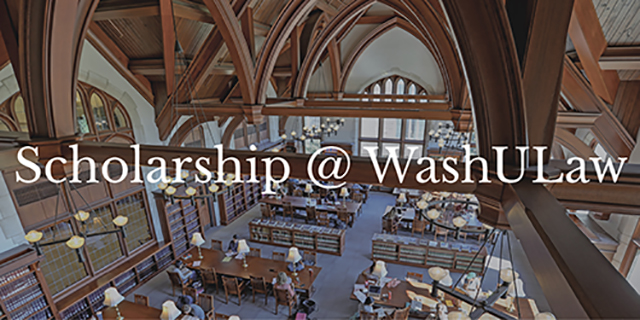
Scholarship@WashULaw
Document Type
Article
Publication Date
2021
Publication Title
Texas Law Review
Abstract
Today, any number of troubling government pathologies—a lawless presidency, a bloated and unaccountable administrative state, the growth of an activist bench—are associated with the emergence of a judicial philosophy that disregards the “plain meaning” of the Constitution for a loose, unprincipled “living constitutionalism.” Many trace its origins to the Progressive Era
(1890–1920), a time when Americans turned en masse to government as the solution to emerging problems of economic modernity—financial panics, industrial concentration, worsening workplace conditions, and skyrocketing unemployment and inequality—and, the argument goes, concocted a flexible, new constitutional philosophy to allow the federal government to take on vast, new regulatory powers.
As this Article argues, this account is misleading. The Progressive Era did witness an outpouring of criticism towards the century-old Constitution, which many viewed as outdated, exclusionary, and countermajoritarian. Yet the idea of interpreting the text to make it evolve to fit “the spirit of the age,” as Woodrow Wilson called for, was anathema to millions of progressive Democrats who turned to the formal channels of Article V to update the Constitution. Far from a progressive innovation, reformers saw flexible constitutional construction as the tool of conservative interests and courts dangerously “usurping” the legislative power by reading into the law—especially the Fourteenth Amendment—unwritten principles of contract and property belonging to a bygone era. Instead, a vigorous reaction against the “unwritten constitution” of the Lochner era led to a burst of democratic mobilization around the idea of using the amendment power to make the People, not courts, the ultimate constitutional authority. Besides the four amendments that were ratified during the Progressive Era, over 1,700 amendment proposals were floated in Congress, many of them targeting countermajoritarian features of American democracy like the indirect election of Senators, the Electoral College, and lifetime judicial tenure. Some even proposed to override Supreme Court decisions by popular vote and to amend Article V itself.
After a string of successes, this formalist strand of progressive constitutionalism faded in the early decades of the twentieth century, a victim of postwar pessimism and fatigue, and most importantly, fissures between Progressives who continued to fight for formal revision and those who, just decades after Lochnerism faded from the bench, turned their energies to developing a different slate of unwritten constitutional rights deemed “essential to the concept of ordered liberty.” Today, distant though we are from the progressive formalists’ hopes to channel ambitious political reform through routine, democratic, and formal constitutional change, revisiting this Era serves several purposes. First, it puts into context the text’s relative immobility in the last hundred years. Second, it illuminates the fact that many of our current constitutional dilemmas are the result of a living constitutionalism practiced by interpreters on the left and right alike. Finally, it may also help us envision what a return to truly democratic constitutional politics would look like.
Keywords
Constitutional Law, Jurisprudence, Legal History, Progressive Era, Popular Constitutionalism
Publication Citation
Andrea Scoseria Katz, The Lost Promise of Progressive Formalism, 99 Tex. L. Rev. 679 (2021)
Repository Citation
Katz, Andrea Scoseria, "The Lost Promise of Progressive Formalism" (2021). Scholarship@WashULaw. 29.
https://openscholarship.wustl.edu/law_scholarship/29
Included in
Constitutional Law Commons, Legal History Commons, Legal Studies Commons, President/Executive Department Commons, Supreme Court of the United States Commons

